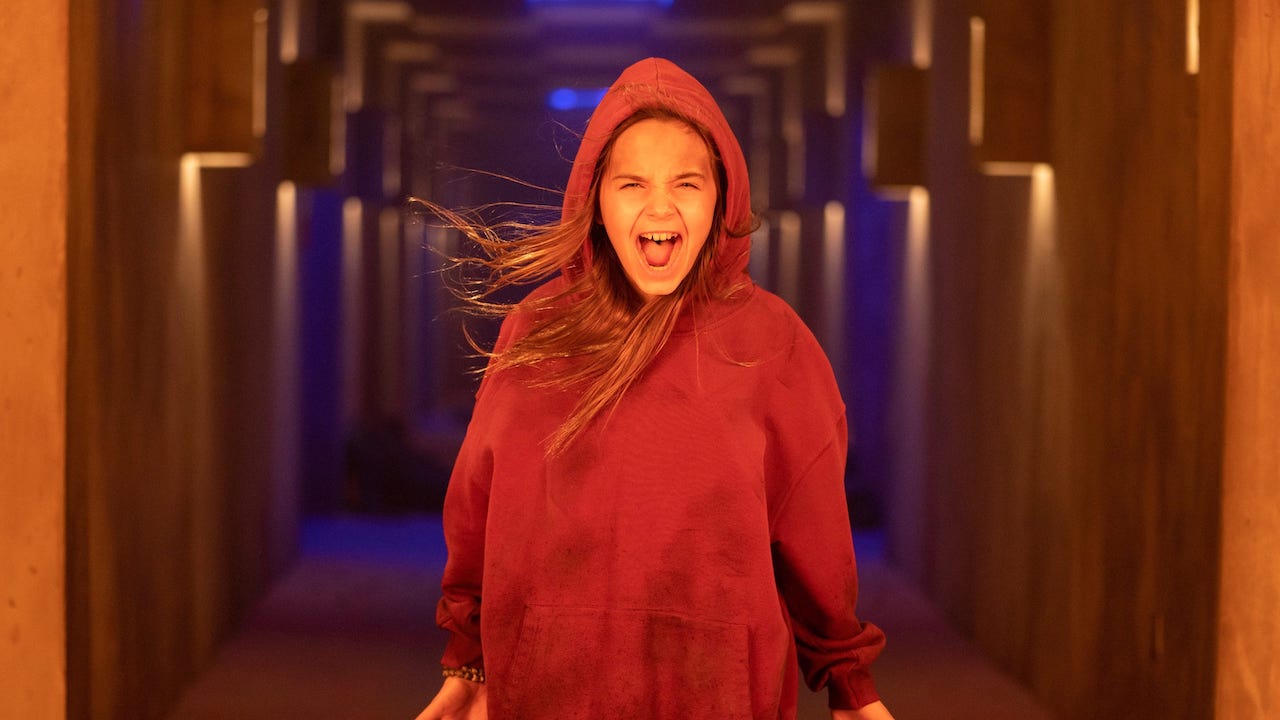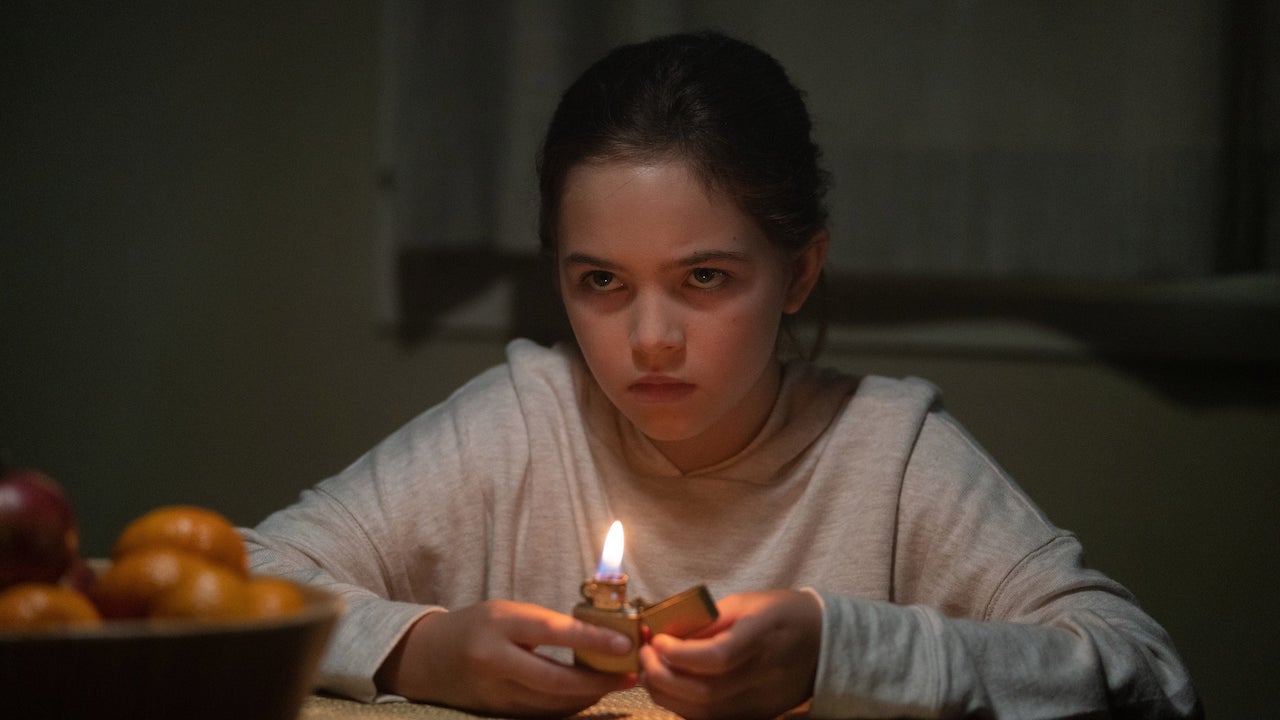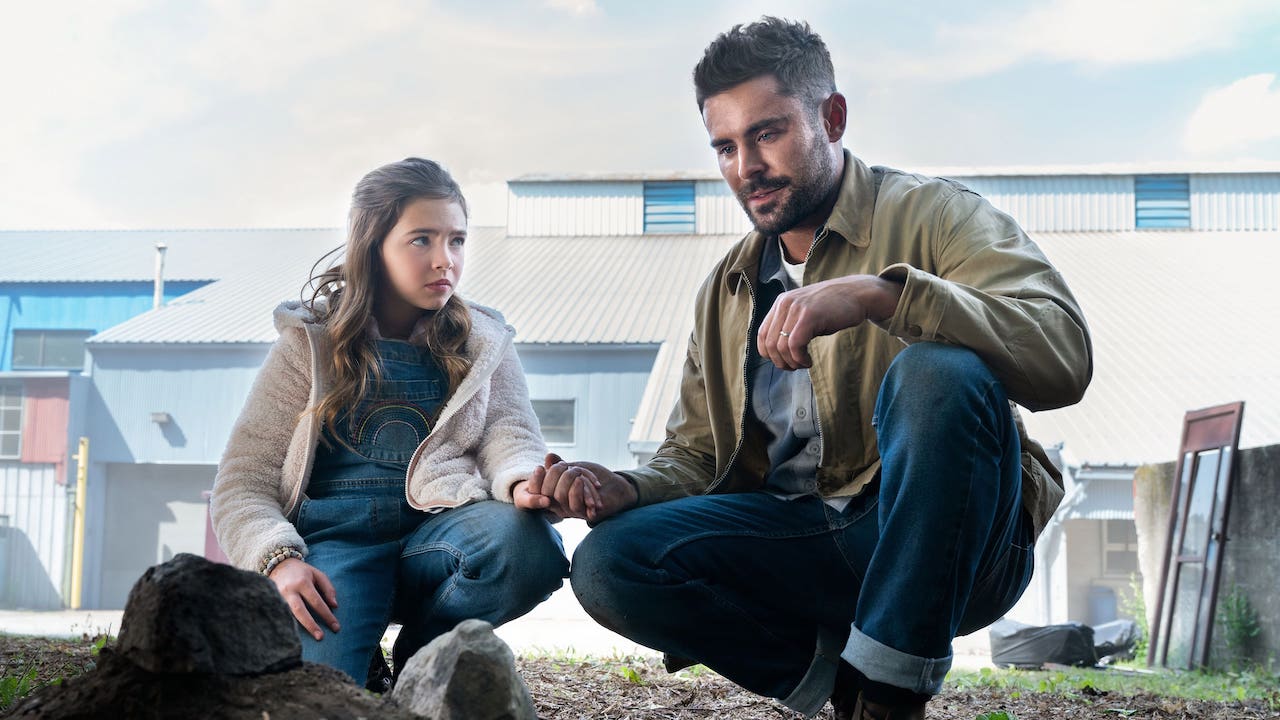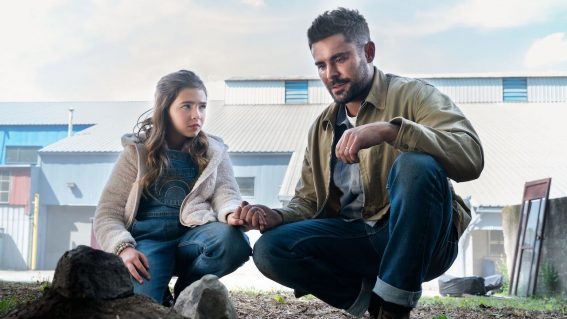Compared to Carrie, lukewarm Stephen King adaptation Firestarter doesn’t sizzle

Zac Efron, John Carpenter’s synths, and some neat visual heat motifs aren’t enough to make the reboot of Firestarter feel scary or tense, says Eliza Janssen.
Firestarter (2022)
Points are automatically deducted from this Stephen King adaptation for its failure to use The Prodigy’s song Firestarter—not even a creepy child choir version during a montage. Nothing. Nothing!!
Instead we get Carpenterian bubbling synths, getting us a little too close to another 80s-inflected midwest “psychic girl” franchise for comfort. Nicely, the music is actually by John Carpenter and his son Cody—I just wish the film around it was a little more worthy.
Directed by Keith Thomas, the new Firestarter struggles to set itself apart (and alight) when compared to Stranger Things, expensive King adaptations like Doctor Sleep and It, and even the 1984 film it’s rebooting: the posters of both films are virtually identical. Compared to King and De Palma’s brilliant, other tale of pyrokinetic puberty Carrie, it feels especially limp, not finding the sad spark in its parental dynamic that made that film ache so much.
Ryan Kiera Armstrong plays Charlie McGee, the product of two telekinetically-gifted parents who underwent some kind of trippy MKUltra-esque experiment in their college years. Vicky (Sydney Lemmon, the words “I am going to die in the next ten minutes” tattooed on her forehead) and Andy (Zac Efron) have put measures in place to protect their daughter from her nascent mind powers. There’s a fire extinguisher on the mantelpiece, Wi-Fi is forbidden so that the ominous NSI doesn’t locate the family, and dad runs Charlie through an anxiety-calming sensory checklist when things start to heat up.

Parallels to raising a neurodivergent child or, hell, any child going through puberty are portrayed quite sensitively, showing how overprotective, well-meaning choices may only isolate and target Charlie more. When she admits that using “the bad thing in [her] body” can make her feel good, we’re thrilled by the potential of this fragile kid turning to the dark side. She’s not a weapon or a superhero, “just a little girl with little girl emotions that are wildly unpredictable”.
Some scenes of Charlie’s first-degree burn victims really wailing and, in one instance, chatting with their pregnant wife on the phone before the roasting begins, almost posit her as a fledgling villain, too. But ultimately the film wimps out and mostly shows the kid in complete control, with Efron never in doubt the entire time. Except for this one incident with an unfortunate barbecued cat.
A typically inexpensive title from Blumhouse that seems to have scorched through three directors mid-production, Firestarter tries nobly to make the most of its raw elements. Efron’s Disney Channel blue eyes look great dripping with blood when his hypnotic powers are exhausted (wild that he’s already playing dad roles), and there’s exactly one scene and a tidbit of narration from sneering Robocop villain Kurtwood Smith. I hope he got paid a lot.

But beyond that, psychic battles are not especially cinematic to watch—mostly it’s just characters focusing and looking a bit constipated—and the locations are unexciting, save for the film’s climax in crypt-like, moodily lit NSI basements.
Act three introduces some cool infrared heat-map footage that definitely could’ve been employed more, matching the neat shots of heat shimmering on the edge of the frame. Michael Greyeyes’ stormy villain feels half-developed—there’s certainly an edit out there where his embittered First Nations hitman got more backstory, and a redemptive arc that feels complete.
The most damning thing I unfortunately found with Firestarter is that it merely wasn’t scary, or “thrilling” if we’re classing it as a supernatural family thriller rather than a Stephen King horror joint. Contrastingly, as a monstrous coming-of-age fable, Turning Red has more to say about the complexities of outgrowing one’s parents and harnessing the power of adolescence, despite a painful cost. There’s even a dodgeball scene in both films showing our tween hero lashing out at a bully; at least the Pixar movie isn’t promising to scare you with its version.




















